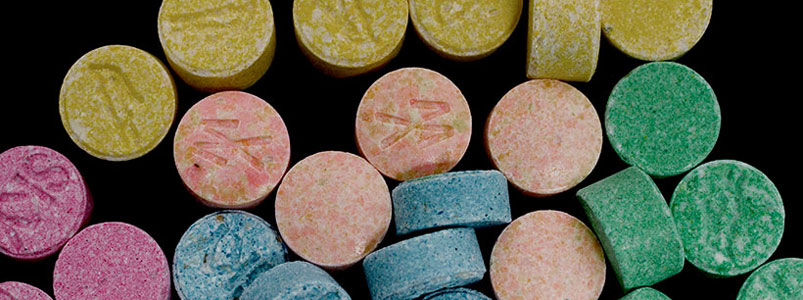Drug Facts
With so many voices and opinions out there, it’s important to understand the facts.
Fact is that while you’re a teen (and even into your early 20’s!), you’re still growing and developing, and drug abuse during these years in particular can have a lasting impact. Another fact to consider: the brain is much more vulnerable to addiction during these years. 90% of Americans with a substance abuse problem started smoking, drinking or using other drugs before age 18.
When it comes to drug use, individual reactions and experiences vary, so it’s important to understand the usual risks and effects, both short- and long-term. Knowledge can be the key to making your own best decisions.
Information provided isn’t to prevent anyone from seeking medical treatment under the advice and care of their doctor. A variety of substances offer potential medicinal value, but that doesn’t negate their risks, especially when abused.
- Adderall
- Alcohol
- Bath Salts
- Benzos
- Cocaine
- DXM
- GHB
- Hallucinogens
- Heroin
- Inhalants
- Ketamine
- LSD
- Marijuana
- MDMA
- Meth
- Mushrooms
- Over-the-Counter
- Prescription Drugs
- Rohypnol
- Salvia
- Spice
- Steroids
- Tobacco & Nicotine
- Xanax
- Adderall
- Alcohol
- Bath Salts
- Benzos
- Cocaine
- DXM
- GHB
- Hallucinogens
- Heroin
- Inhalants
- Ketamine
- LSD
- Marijuana
- MDMA
- Meth
- Mushrooms
- Over-the-Counter
- Prescription Drugs
- Rohypnol
- Salvia
- Spice
- Steroids
- Tobacco & Nicotine
- Xanax

MDMA
MDMA has a rep for being a party drug, but side effects like tremors, muscle cramps and nausea, not to mention anxiety and depression, aren’t much fun. Prolonged use also carries the risk of longer-term problems with memory and learning.
AKA
Molly, ecstasy, XTC, X, E, Adam, Eve, clarity, hug, beans, love drug, lovers’ speed, peace, uppers
What is it?
MDMA (methylenedioxy-methamphetamine) is a synthetic, mind-altering drug that acts both as a stimulant and a hallucinogenic. Other chemicals – such as caffeine, dextromethorphan (DXM), amphetamines, PCP, or cocaine – are sometimes added to, or substituted for MDMA, so purity is always a question, complicating its risks.
The Risks
Like any other stimulant, MDMA will increase your heart rate and blood pressure. Other physical effects include tremors, muscle cramps, nausea, faintness, chills, sweating and blurred vision. People who use MDMA are also at risk of dehydration, which may not seem like a big deal, but by interfering with the body’s ability to regulate its temperature, it puts you at risk of dangerous, sometimes fatal, overheating.1
MDMA can also be extremely dangerous in high doses or when multiple small doses are taken in a short amount of time (usually in an attempt to maintain the high). High levels of the drug in the blood stream can increase the risk of seizures and affect the heart’s ability to maintain its normal rhythm.
Shortly after taking MDMA, it’s possible to feel confusion, depression or even severe anxiety—but these psychological effects have also been reported to occur days or weeks after taking the drug.2
Long-Term Effects
MDMA directly affects the brain chemical serotonin, and how your brain cells communicate with each other. Clinical studies show that MDMA can be harmful to your brain and can increase the risk of long-term problems with memory and learning.3 Also, taking too much MDMA can interfere with the body’s ability to regulate its temperature. This can cause hyperthermia, which can lead to liver, kidney and cardiovascular failure.4
The Bottom Line
People will claim that MDMA is “safer” than other drugs, but there’s never anything safe about disrupting your ability to think clearly and putting your health at risk.
- National Institute on Drug Abuse. MDMA (Ecstasy or Molly).
Revised June 2013. Retrieved June 2013.
View Source [↩] - U.S. Department of Justice Drug Enforcement Agency. Drugs of Abuse: Ecstasy or MDMA.
Retrieved July 2011.
View Source [↩] - National Institute on Drug Abuse. DrugFacts: MDMA (Ecstasy).
Revised December 2012. Retrieved May 2013.
View Source [↩] - National Institute on Drug Abuse. DrugFacts: MDMA (Ecstasy).
Revised December 2012. Retrieved May 2013.
View Source [↩]







